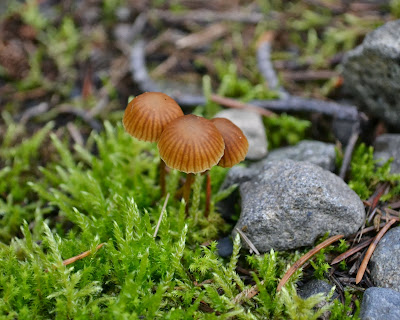When my sister-in-law Thea showed me the amazing mushrooms pictures she had taken in Manning Park I knew I had to make a trip out there myself. Last Thursday my kids had only a half day of school, so we drove up to Manning Park to see if there were any mushrooms left. And wow! Were there ever a lot of fungi around. I went camera happy, and below are some of the different types we found. Because I'm still learning to ID many of these, I have left off any names for now.
Because mushrooms grow from spores, not seed, they often seem to magically appear out of nowhere over night.
When I first spotted this mushroom, I thought it was a small, mushy orange that someone had dropped along the trail.
Pushing it's way through the rich ground cover of the forest floor.
Hieroglyphics found in the tombs of the Pharaohs suggest that the ancient Egyptians believed the mushroom to be “the plant of immortality.” The mushroom’s distinct flavor so intoxicated these demi-gods, that they decreed mushrooms to be food for royalty alone, and prohibited any commoner from handling the delicacies.
All mushrooms are Fungi, but not all Fungi are Mushrooms.
Mushrooms are fungi. Fungi are as uniquely different from plants as plants are from animals. In fact, fungi and animals are now in the same super-kingdom
A giant fungus (F. ellipsoidea) discovered in Hainan Province, China, in 2010 may be largest ever documented, with a fruiting body of 10 meters (about 33 feet) and weighing about half a ton, according to the BBC News.
Fungi are very difficult to observe. What we call a mushroom is only the tip of the iceberg of a much bigger and essential invisible organism that lives most of its live underground.
A single fungus recently found in Michigan covers an area of forty acres underground and is thought to be a few centuries old.
Some of the oldest living mushroom colonies are fairy rings growing around the famous Stonehenge ruins in England. The rings are so large that they can best be seen from airplanes.



















































































No comments:
Post a Comment